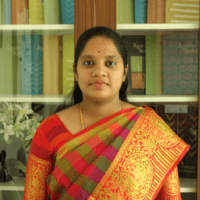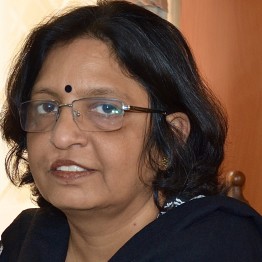The book titled Women and Work in Rural India, edited by Madhura Swaminathan, Shruti Nagbhushan, and V. K. Ramachandran, and published by Tulika Books and the Foundation for Agrarian Studies (FAS), was released on August 25, 2020. The first copy of the book was jointly handed over by Indu Chandrasekhar, Managing Director, Tulika Books, and Vinod Koshti, Project Manager, Rosa Luxemburg Stiftung (South Asia), to Brinda Karat, patron and former General Secretary of the All India Democratic Women’s Association, and Polit Bureau member of the Communist Party of India (Marxist), who formally released it. The release was followed by a keynote speech by Brinda Karat and a panel discussion.

Screenshot of the book release event. Full video can be accessed here.
The programme was moderated by Sandipan Baksi, Director, FAS. V. K. Ramachandran, a trustee of the Foundation and the General Editor of the Agrarian Studies Series published by the Foundation, introduced the Series and the book to the participants. Ramachandran thanked Tulika Books, for the publishing partner of the Foundation from its first publication, TNQ Technologies for designing the book, and the Rosa Luxemburg Stiftung for its consistent support to research at the Foundation.
In her keynote address, Brinda Karat pointed out that there was a systematic tendency to make women’s work “invisible.” This applied particularly to the work of rural women. She highlighted problems of “under-counting and underestimation,” and “the policy-driven refusal to recognize the problem of unemployment and underemployment of women in rural India.” The essays in this book, she said, showed up the gaps in the official approach to rural women’s work, and presented “an insightful analysis of the world of rural women’s work and its multiple layers.” She said that the book exposed the myth that unemployment among women was high because of their “voluntary exit” from the workforce.
As a result of the general crisis of livelihoods in the Indian countryside created by capitalism, Brinda Karat said, rural women had to work at multiple tasks, making it difficult to categorise them into specific occupational groups. The time-use survey method developed by the Foundation in the research for this book, she said, was a critical approach to the study and analysis of the diversity of rural women’s work. The women’s movement in India could benefit greatly from analyses of women’s work based on large-scale time-use surveys.
Brinda Karat also spoke about the class differentiation among rural women that has been highlighted by the book. She discussed the importance of the study of wage differences between men and women in rural India, another critical contribution of the book. On the issue of women’s work under the Mahatma Gandhi National Rural Employment Guarantee Act (MGNREGA), Brinda Karat argued for the need to redesign the scheme, making it more women-friendly.
Brinda Karat congratulated the Foundation for its efforts to integrate caste into the study of agrarian relations. These efforts are reflected in the book, she said. A section in the book highlights the specific issues of Dalit women in rural India. “The very nature of the social relationship” of the Dalit woman worker with her employer, Karat noted, “is such as to place her in a most vulnerable position.” She stressed the need for further studies documenting the work conditions of Dalit and Adivasi women, including studies of proletarianisation among Adivasi women. Karat also commended the book for its critical evaluation of micro-finance institutions (MFIs), which she equated with modern moneylending. The book, she said, “meets the highest standards of publishing, including with respect to design and layout.”
In conclusion, Brinda Karat thanked the editors and authors of the book for the rigorous analysis that went into the writing of the book. She said she considered it a unique contribution to the women’s movement in India, one that will help the movement in integrating the various struggles that women workers are engaged in their daily lives.
The keynote was followed by a brief introduction by Shruti Nagbhushan to the themes and chapters of the book. The book has 17 chapters spread across the following six themes: (i) conceptual, theoretical, and methodological issues in understanding women’s work; (ii) women’s work in agriculture and allied sectors; (iii) caste and class issues; (iv) women in non-agricultural work; (v) women’s wages and earnings; and (vi) access to finance.
Shruti Nagbhushan’s introduction was followed by a panel discussion on some of the themes covered by the book. The members of the panel were Madhura Swaminathan, K. Hemalata, Judith Heyer, Mariam Dhawale, Pallavi Chavan, and Amit Basole.
Madhura Swaminathan described the unique features of the time-use surveys conducted by the Foundation. These studies allow the calculation of women’s participation in various kinds of activities, economic as well as “non-economic,” in rural India. Lack of gainful employment opportunities, she emphasized, was a critical problem of women in the Indian countryside. K. Hemalata, participating through a pre-recorded video message, highlighted the working conditions of over 8 million women engaged as “scheme workers,” or workers on various development schemes in rural India. These women are not recognised as workers despite the nature of their work and long hours of labour. Judith Heyer began by reiterating the importance of the content of the book for activists and academics alike. The differences within the broad category of rural women that the class analysis in the book highlights, she said, was one of its unique contributions, and one that that should “inform all our actions.” Mariam Dhawale in her presentation vividly highlighted the burden of work on women in rural India, and the continuing failure to recognise them as workers or farmers. Pallavi Chavan greatly appreciated the rigorous analysis, and the application of methodology and data sources appropriate to the research problem at hand, a hallmark of all research at the Foundation. The book, she said, has been successful in representing the results in a manner that was simple and comprehensible and not burdened by jargon. She said that she believed that the book would have benefited from a focused discussion on the global economic context of neo-liberalisation in which the different themes covered by the book are playing out. Amit Basole discussed possible ways in which the book helps us to develop a better understanding of the Indian economy.
This was followed by a short session of questions and answers.






























































 Sudha is an Administrative Assistant of the Foundation. She assists the administrative division of the Foundation and also has taken part in fieldwork organised by the Foundation.
Sudha is an Administrative Assistant of the Foundation. She assists the administrative division of the Foundation and also has taken part in fieldwork organised by the Foundation.











